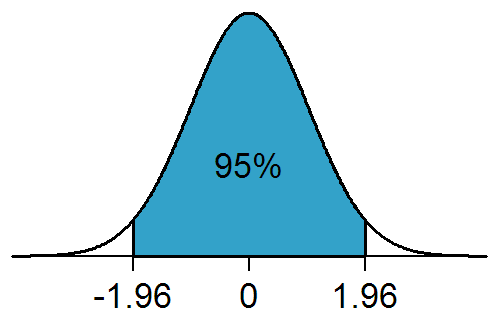|
Gender Gaps In Mathematics And Reading
The gender gaps in mathematics and reading achievement refer to the finding that, on average, the two sexes perform differently in mathematics and reading skills on tests. On average, boys and men exceed in mathematics, while girls and women exceed in reading skills. Mathematics and reading gaps by country The Programme for International Student Assessment assesses the performance of 15-year-olds in mathematics and reading in OECD and OECD partner countries. The table below lists the scores of the PISA 2009 assessment in mathematics and reading by country, as well as the difference between boys and girls. Gaps in bold font mean that the gender gap is statistically significant ( p<0.05). A positive mathematics gap means that boys outperform girls, a negative mathematics gap means that girls outperform boys. A positive reading gap means that girls outperform boys (no country has a negative reading gap). There is a negative |
Programme For International Student Assessment
The Programme for International Student Assessment (PISA) is a worldwide study by the Organisation for Economic Co-operation and Development (OECD) in member and non-member nations intended to evaluate educational systems by measuring 15-year-old school pupils' scholastic performance on mathematics, science, and reading. It was first performed in 2000 and then repeated every three years. Its aim is to provide comparable data with a view to enabling countries to improve their education policies and outcomes. It measures problem solving and cognition. The results of the 2018 data collection were released on 3 December 2019. Influence and impact PISA, and similar international standardised assessments of educational attainment are increasingly used in the process of education policymaking at both national and international levels. PISA was conceived to set in a wider context the information provided by national monitoring of education system performance through regular assessm ... [...More Info...] [...Related Items...] OR: [Wikipedia] [Google] [Baidu] |
Statistical Significance
In statistical hypothesis testing, a result has statistical significance when it is very unlikely to have occurred given the null hypothesis (simply by chance alone). More precisely, a study's defined significance level, denoted by \alpha, is the probability of the study rejecting the null hypothesis, given that the null hypothesis is true; and the ''p''-value of a result, ''p'', is the probability of obtaining a result at least as extreme, given that the null hypothesis is true. The result is statistically significant, by the standards of the study, when p \le \alpha. The significance level for a study is chosen before data collection, and is typically set to 5% or much lower—depending on the field of study. In any experiment or observation that involves drawing a sample from a population, there is always the possibility that an observed effect would have occurred due to sampling error alone. But if the ''p''-value of an observed effect is less than (or equal to) the significan ... [...More Info...] [...Related Items...] OR: [Wikipedia] [Google] [Baidu] |
P Value
In statistical hypothesis testing, null-hypothesis significance testing, the ''p''-value is the probability of obtaining test results at least as extreme as the Realization (probability), result actually observed, under the assumption that the null hypothesis is correct. A very small ''p''-value means that such an extreme observed Outcome (probability), outcome would be very unlikely under the null hypothesis. Reporting ''p''-values of statistical tests is common practice in academic publishing, academic publications of many quantitative fields. Since the precise meaning of ''p''-value is hard to grasp, misuse of p-values, misuse is widespread and has been a major topic in metascience. Basic concepts In statistics, every conjecture concerning the unknown probability distribution of a collection of random variables representing the observed data X in some study is called a ''statistical hypothesis''. If we state one hypothesis only and the aim of the statistical test is to see wh ... [...More Info...] [...Related Items...] OR: [Wikipedia] [Google] [Baidu] |
Correlation And Dependence
In statistics, correlation or dependence is any statistical relationship, whether causal or not, between two random variables or bivariate data. Although in the broadest sense, "correlation" may indicate any type of association, in statistics it usually refers to the degree to which a pair of variables are '' linearly'' related. Familiar examples of dependent phenomena include the correlation between the height of parents and their offspring, and the correlation between the price of a good and the quantity the consumers are willing to purchase, as it is depicted in the so-called demand curve. Correlations are useful because they can indicate a predictive relationship that can be exploited in practice. For example, an electrical utility may produce less power on a mild day based on the correlation between electricity demand and weather. In this example, there is a causal relationship, because extreme weather causes people to use more electricity for heating or cooling. H ... [...More Info...] [...Related Items...] OR: [Wikipedia] [Google] [Baidu] |
Gender Equality Gender equality, also known as sexual equality or equality of the sexes, is the state of equal ease of access to resources and opportunities regardless of gender, including economic participation and decision-making; and the state of valuing different behaviors, aspirations and needs equally, regardless of gender. Gender equality is the goal, while gender neutrality and gender equity are practices and ways of thinking that help in achieving the goal. Gender parity, which is used to measure gender balance in a given situation, can aid in achieving gender equality but is not the goal in and of itself. Gender equality is more than just equal representation, it is strongly tied to women's rights, and often requires policy changes. , the global movement for gender equality has not incorporated the proposition of genders besides women and men, or gender identities outside of the gender binary. UNICEF says gender equality "means that women and men, and girls and boys, enjoy the s ... [...More Info...] [...Related Items...] OR: [Wikipedia] [Google] |



.jpg)